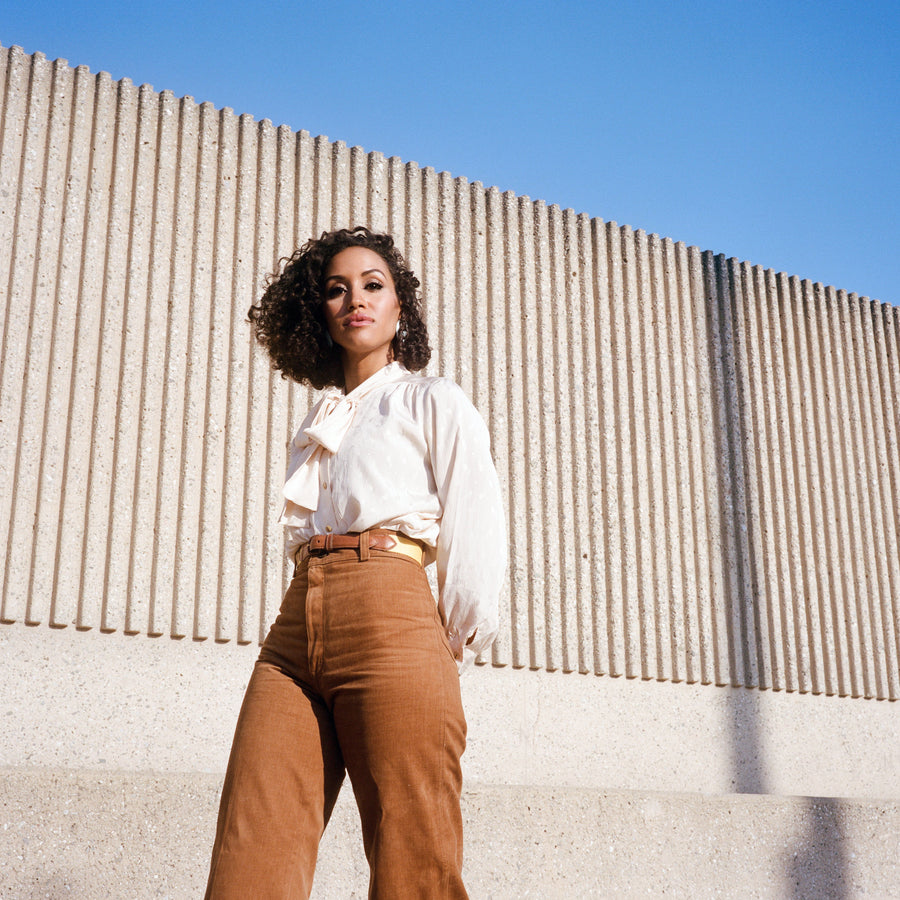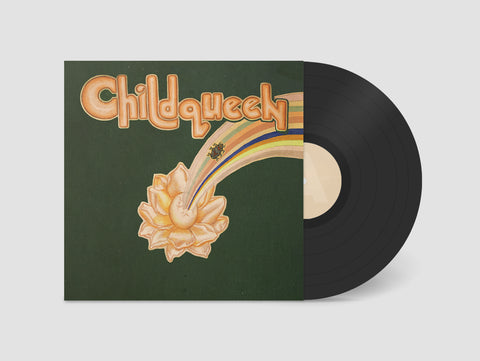Kadhja Bonet
Contact

Bio
Kadhja Bonet, The Visitor
Kadhja Bonet’s debut album The Visitor opens with an awe you’d expect from the golden age of cinema, somewhere between Cinderella and Barbarella in its half-mythical atmosphere. Its curtains draw back to the ascendant fanfare of Earth Birth, with keys and choirs science-fictionally echoing down from deep space, as Kadhja—pronounced “kodya”— invites us into a world not wholly our own, where past and future meet in a parallel, yet far lovelier, present. Even as this overture fades and Kadhja’s voice velvetly emerges on Honeycomb, we still feel we’re drifting into a timeless, unplaceable realm of Kadhja’s own making. This very timelessness sends many a reviewer scrambling to find her nearest genre or closest musical cousins. They will blurb about classical, jazz, soul, folk, and even psychedelia, but ultimately fail to comfortably place her— this, all by Kadhja’s design. For if she were “folk”— maybe poetically comparable to a Karen Dalton or a Sybille Baier— it would only be the folk of some future aeon, a thousand years hence. If her rich instrumentation of strings and wind strikes us as “classic,” it’s not because it harkens to any past era or vogue, but because Kadhja paints in a perennial imagery that could as much be now as then as any other time. Literary comparisons convey far more in Bonet’s case. The mood of songs like The Visitor and Gramma Honey, with their rehearsals of dusky and feeling-freighted tales, belong more to magical realism than any shelf or bin in the neighborhood record store. With the uncanniness of a South American novelist, Kadhja recalls the writing of Gramma Honey: “I had written the song long ago— the melody— and had always known it was written for someone particular, someone close. It wasn’t until my grandmother passed away that I knew it had been written for her all along.” Likewise, her songs are not really “psychedelic.” Rather they are unwaveringly contemplative, much like the Japanese poets she evokes in Fairweather Friends. “We sat beneath a tree who wept in shades of pink / and Spring devolved her speech, the blossoms peaking / with borrowed comfort sipped from bottles made of glass. Ah, Sakura, mono no aware.” Dwelling as it does on the aching ephemerality of all things, this song may be inspired by actual events, by the sudden parting of dear friends; it nevertheless speaks to an impermanence that, she knows, twinkles in every last one of her listeners. For the sake of this same universalist spirit, Kadhja stays pretty mum— if not a little mysterious— about her own life story. She insists that her audience convene with her on imaginative and musical planes, instead of through byword associations with any scene or venue, be it in Los Angeles or on the beaches of Rio De Janeiro. What we do learn and should know about Kadhja is her early and formal training in classical music quarters, where she mastered violin and viola, learned flute and guitar, and gained the sharp compositional talents that frame every note and curve of The Visitor. Though she eventually abandoned the rigidities of the academy and orchestra, along with her father’s hopes of her becoming a concert violinist, her songwriting has never lost the clean, compositional rigor of those younger days. “I’m not off-the-cuff in the way you might hear in jazz improvisation: I write. And I’ve accepted this as something that will always stay with me as a remnant of my training.” Given the sprightliness of her music, the way melodies step from cloud to cloud, the way her voice quickly veers and dodges an expected note, this may surprise you. It has certainly surprised many who have watched her perform live and belittlingly assumed that her voice alone is talent enough for any one woman. But doubters beware. Measured yet confident, good-humored yet unwilling to suffer fools, Kadhja will immediately apprise underestimators that all the writing and arrangement on The Visitor— except for the Jaco Pastorius melody put to her words on Portrait of Tracy and an ode to Milton Nascimento’s “Francisco”— is entirely of her creation. While calling in friends like Te’amir Yohannes Sweeney for drums, as well as Low Leaf, Peter Dyer, Randal Fisher, and Itai Shapira for harp, synth, flute, and bass, Bonet still plays a goodly half of the instruments herself, including guitar, violin, flute, and the backup vocals that fill up the skies of her music. And if this weren’t enough to assure the independence of her musical vision, Kadhja also produced The Visitor, though with much of its mixing and engineering handled by her assistant producer Itai Shapira, one of the few souls trusted behind the curtains of her musical process. As with a film whose maker sees their vision through from script to screen, The Visitor is an opus unpolluted by the mixed advice or overproductions that plague other albums with so complete and spacious a sound. This is what thrills her admirers and ardent blurberati: The Visitor plays through like one individual’s lucid dream in what is sometimes an all-too-dreamless musical landscape. Once we hear it, we recognize it as something that’s been harder and harder to find in the last thirty or forty years, though so badly missed. Instead of wistfully returning to former days, however, Kadhja has humbly learned from her predecessors while following their signs ever forward. Just as the tarot in The Visitor advises: “the world was made for those who can begin again.”
Tracks
- Choosing a selection results in a full page refresh.
- Press the space key then arrow keys to make a selection.

